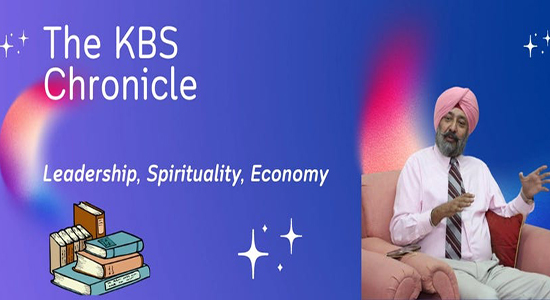Creating a Pool of Goodwill-and Developed Plots- By KBS Sidhu
Editor’s Note:
This article presents a singular perspective on the Land Pooling Policy recently notified by the Bhagwant Mann-led Punjab Government. Given the significant implications of this policy, it merits open and informed debate among stakeholders, policymakers, and thought leaders.
We welcome responses, counterviews, and well-reasoned opinions on this issue. Submissions grounded in facts and logic will be considered for publication.
— Editor
1. Land Pooling: A Quiet Revolution in Planned Urbanisation
In a transformative move aimed at redefining the dynamics of urban expansion, Punjab’s Land-Pooling Policy 2025, notified today (June 4, 2025), has emerged as a new blueprint for participatory development. In place of coercive land acquisition—often hamstrung by the procedural and compensation constraints of the Right to Fair Compensation and Transparency in Land Acquisition, Rehabilitation and Resettlement Act, 2013—the government now invites landowners to become co-developers, sharing not just land, but also the fruits of urban growth. This quiet revolution is steadily converting erstwhile resisters into willing stakeholders, creating what many are calling a “pool of goodwill” in the state’s evolving development narrative.
2. Under the CM’s Vision: A Political Mandate with a Human Touch
This progressive policy carries the clear imprimatur of Punjab Chief Minister Bhagwant Mann, who personally chaired the Cabinet meeting of the Council of Ministers that granted it formal approval earlier this week. His government’s approach is anchored in a pragmatic recognition: even generously compensated compulsory acquisitions—such as those under the National Highways Act—often provoke sharp resistance and prolonged agitation among Punjab’s farming communities. By replacing confrontation with collaboration, the Chief Minister’s enlightened vision presents a humane and politically astute alternative—one that balances development imperatives with grassroots sensitivities and the dignity of landowners.
3. From Acquisition Anxiety to Collaborative Confidence
The days of forced acquisition are being quietly retired. Farmers and landowners, once locked in bitter legal battles against the state, are now can become willing and strategic participants. Instead of one-time payouts, they have the option to receive developed residential, industrial, or commercial plots as equity returns on their land contribution. With additional support like a ₹30,000-per-acre subsistence allowance during the development phase, landowners are gaining not only security but a stake in the state’s future.
4. Innovative Bureaucracy and Civil Service Leadership
At the heart of this transformation lies a quietly determined and reform-oriented bureaucracy. Principal Secretary Vikas Garg, IAS, has piloted the policy’s formulation and rollout with rare clarity, foresight, and responsiveness. One of the most empowering features of the framework is that the Letters of Intent (LOIs) issued to landowners are officially transferable, creating the foundation for a robust secondary market. This not only enhances liquidity but also allows landowners the freedom to book profits or cash out, should they so choose—transforming what was once dead capital into a tradable asset.
Garg’s team has also introduced a suite of citizen-sensitive innovations—from special LOIs for micro-holdings, to seamless layout approvals, and real-time public feedback mechanisms. These reforms reflect an administration that is not merely executing policy but actively enabling participation and trust. Under his leadership, the government machinery is being reshaped from an enforcer into an enabler—proving that good governance can be both firm and facilitative.
5. Master-planning with Integrity
Despite opening the gates to private participation, the sanctity of the master plan remains intact. Only about one-third of pooled land is returned to owners as developed plots, while the remaining area is retained by authorities for parks, roads, utilities, and public infrastructure. This ensures that new sectors do not suffer from the chaotic sprawl of earlier times. External development charges (EDC), quantified in advance, safeguard budgetary provisions for roads, sewage systems, and power grids—an essential guarantee for end-users and future residents.
6. Thinking Big: Unlocking the 9-Acre and 50-Acre Opportunities
Two special windows give this policy its strategic edge. Landowners pooling nine acres or more can secure group housing permissions on three acres, making vertical, serviced residential clusters viable. Meanwhile, land aggregators crossing the fifty-acre threshold qualify for thirty-acre plotted colonies, provided they follow a smart layout mix—20% roads, 10% green, 5% commercial, and 65% plotted housing. This enables Punjab to incubate township-scale developments that are integrated, inclusive, and scalable—without bypassing the master plan.
7. A Win-Win-Win Equation
For landowners, the new model means long-term wealth rather than short-term payout. For urban authorities, it guarantees land availability without litigation. For plot buyers and end-users, it promises serviced plots with assured amenities and no title cloud. This is the rare public policy that truly offers a “win-win-win” framework—delivering value across the board while reducing the social and legal friction that has hamstrung land policies in the past.
8. Risks, Lightly Shaded
No innovation is free from risk. The three-year lock-in before LOIs can be monetised may test the patience of smaller landowners. External development charges pegged to future EDC schedules could rise unpredictably. And coordination challenges among multiple landowners sharing development costs—especially for zonal roads—might occasionally slow down execution. Yet these risks are mitigable with transparent execution, phased servicing, and institutional accountability.
9. Summing Up: A Blueprint Worth Watching
Punjab’s Land-Pooling Policy 2025 is not just about land—it is about dignity in development. By aligning the interests of the state, its citizens, and the market, this initiative under Chief Minister Bhagwant Mann’s visionary leadership and Principal Secretary Vikas Garg’s innovative execution sets a new benchmark for inclusive urban growth. If it succeeds in delivering time-bound infrastructure and transparent plot allotments, it could well become a national template—an enduring pool of goodwill that refreshes Punjab’s development ethos.

-

-
KBS Sidhu, Rtd IAS, Former Special Chief Secretary, Punjab
kbssidhu@substack.com
Phone No. : 11111111
Disclaimer : The opinions expressed within this article are the personal opinions of the writer/author. The facts and opinions appearing in the article do not reflect the views of Babushahi.com or Tirchhi Nazar Media. Babushahi.com or Tirchhi Nazar Media does not assume any responsibility or liability for the same.